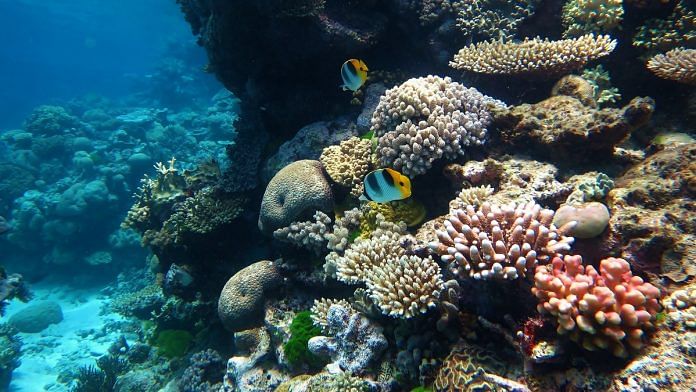A global crowdsourcing operation is sending out an SOS to help save the Great Barrier Reef – one photo at a time.
The innovative scheme was launched last year to map Australia’s natural undersea wonderland, in hopes of establishing the areas most at risk from climate change and other destructive forces.
The Great Reef Census began last year with a call to divers and sailors in or near the reef to take photos and videos of the coral and sea life beneath their hulls. Now, organizers have posted those snaps online for people the world over to browse and analyze. It’s hoped that the gathered data will provide a health map of the reef and help to identify solutions to reversing years of damage.
“As the impacts of climate change and other threats accelerate around the world, there is an urgent need to scale-up conservation efforts globally, which requires everyone to take part,” Andy Ridley, CEO of Citizens of the Great Barrier Reef, the non-profit behind the census, told California Diver magazine.
The search for ‘coral babies’
The “citizen science survey” eventually gathered 13,000 images from all over the reef. They range from images of brightly coloured corals and fish, to grey areas in which the coral has been destroyed by rising sea temperatures and pollution.
One of the project’s aims is to discover which of the reefs spawn the most larvae, or “coral babies”, and harness them to help revive dying reefs.
Diving organizations have been among the keenest volunteers to the census call so far.
“Many of us may not be able to travel to or dive the reef right now but, regardless of circumstance, we can contribute to its future – and ultimately the future of other reef systems around the world,” Kristin Valette-Wirth, Chief Brand and Membership Officer for PADI Worldwide told California Diver.
Also read: Great Barrier Reef faces third bleaching event & world’s oldest salamander in Siberia
Coral bleaching needn’t be permanent
The 2,300km Great Barrier Reef lies off Australia’s northeast coast and is considered one of the seven wonders of the natural world.
But it – and reefs all over the world – are under threat. As sea temperatures rise, the microscopic algae that live inside the coral are expelled, depriving coral organisms of the vital nutrients on which they feed; without the pigment of these algae, the coral’s skeleton shines through, appearing bright. Over time, the organic part of the coral dies, leaving them white and lifeless.
The extent of this process of coral bleaching became apparent in the 1980s. Since then, “severe coral bleaching has become more extensive, frequent, and intense,” according to the US National Oceanic and Atmospheric Administration’s Coral Reef Watch initiative.
Corals can recover from a bleaching event if water temperatures return to typical within a short period of time. This happens naturally at small scales as temperatures rise and fall subject to unusual weather occurrences or as a result of storms, which also physically damage the fragile corals. These events are historically rare, allowing the corals to reestablish themselves.
But the persistence of human-derived disruptions, including climate change, sea acidification from pollution and destructive fishing practices, give the reefs no time to replenish themselves. It’s now estimated that more than half of all coral reefs have been permanently lost.
Global efforts
The Great Reef Census is one of many programmes seeking to help bring life back to the reefs.
The International Coral Reef Initiative (ICRI), is a global initiative backed by the United Nations, that coordinates efforts to preserve these delicate ecosystems.
Many are focused on the Great Barrier Reef. In 2016 an experiment in “coral IVF” successfully cultivated larvae in a lab and re-seeded them at sea, restoring more than 60 corals. And the eReefs programme analyzes satellite-sourced data to assess surrounding water quality.
It’s hoped these insights will help scientists predict when bleaching might happen, and take measures to prevent it.
Mark McCord, Writer, Formative Content
This article was previously published in the World Economic Forum.
Also read: Dead coral reefs could be revived by playing sounds of healthy reefs, finds study



